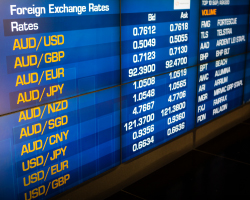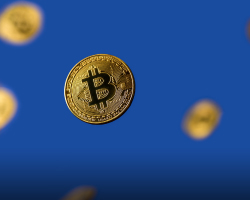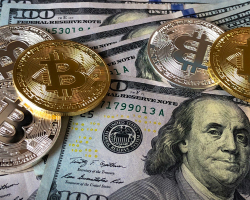Top Investments For 2023: Risks and Sectors You Should Consider

The past year has brought many worries to investors. All three major stock market indices - the Dow, S&P 500, and Nasdaq - fell hard. The bond market hasn't been left out either if you look at the Bloomberg AGG index. Overall, 2022 is a dismal episode for the major stock and bond indices. Lingering COVID problems, unrelenting inflation, and Fed rate hikes have done their dark work. In 2023, many of the problems are certainly not going anywhere.
The big question for the coming year is what about the recession? A lot will depend on the U.S. Fed. If inflation doesn't come down and the Fed continues to raise rates, that doesn't bode well for stocks and other high-risk assets in the near term.
If inflation declines, it will lead to a global slowdown in the world economy. That doesn't mean a Great Recession like the one in 2007, but a downturn is bound to happen.
Investing in 2023: Risks and Opportunities
History shows that the biggest risks usually do not arise from battles over economic spheres of influence. Risk arises when there is a very high degree of certainty among market participants about a particular outcome that ultimately fails to materialize.

Global risks for investors in 2023:
- The opening of the Chinese economy after lockdowns;
- Central banks will be tough;
- Mortgage shock;
- European energy crisis.
In 2020, economies around the world played out worse than predicted. And in 2021, most countries had a surprisingly sharp rebound. And it reminded us that surprises don't always come with a minus sign.
Despite the poor results for stocks in 2022, the markets seem to have already priced in some negative trends that started to gain traction in 2023.
U.S. stocks had their lowest number of positive (earnings) days in 2022, an anti-record in 10 years.
Risk #1. China's Opening
China's opening is unfolding at a surprisingly fast pace. Against this backdrop, economic growth, consumer spending, and inflation are expected to accelerate. It is reasonable to expect a surge in pent-up spending by 1.4 billion consumers after a year of restrictions, aided by a surge in excess cash deposits and falling mortgage rates. This state of affairs could lead to higher returns for corporations whose businesses are tied to the sales of goods in China. But, more importantly, a domestic market run-up could lead to even higher global inflation.
Risk #2. Central Banks Will Be Tough
Market participants seemed to be counting on central banks to stop raising rates at some point. However, the big central banks are making it clear that they are not done yet, even though rates are no longer being raised as aggressively. Large central banks that overly tighten monetary policy by setting rates too high (after remaining at the bottom for too long) pose a risk of worsening economic conditions.
Risk #3. Mortgage Shock
Mortgage rates have risen sharply around the world last year. For example, the annual adjustable mortgage rate in the United States at the end of 2022 was 5.6%, more than double the 2.7% rate at the beginning of last year. Households are facing steep increases in monthly mortgage payments. Interest rates will rise over the next 12 months, and this could lead to a consumer shock.
As the potential global recession continues, any significant increase in unemployment could also lead to defaults as consumer solvency declines.
The highest risks of mortgage shocks are in the United Kingdom, Norway, and New Zealand. Slightly less so in Australia, Sweden, and Canada. Risks are minimal for the U.S., France, Germany, and Italy.
Risk #4. European Energy Crisis
Tensions in the European energy market continue to rise due to Russia's suspension of natural gas supplies through the Nord Stream pipeline. And recently, there was a ban on imports from Europe and a G7 price cap on Russian oil. However, good reserves of raw materials, economical use, liquefied natural gas (LNG), and a very mild start to Europe's winter have reduced the risk of an energy crisis. The EU chose the format of forced rationing of energy raw materials this winter.
Nevertheless, Europe's gas supply situation remains precarious. Colder weather could lead to increased gas consumption. At the same time, the possibility of importing U.S. LNG is limited. Europe could face massive shutdowns of industrial and automotive companies.
So where should an investor invest in 2023? Let's look at different asset groups and give our recommendations.
Stocks
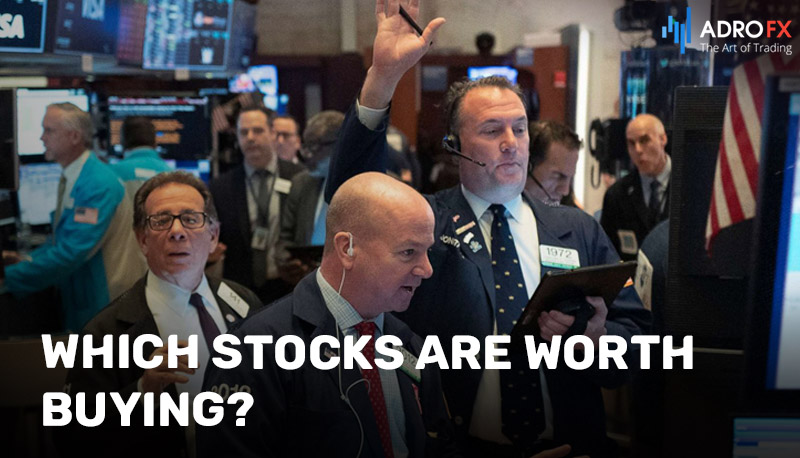
An interesting trend noted by experts at Morgan Stanley is that many investors today are focused on the short term: the average holding period for stocks is only six months compared to eight years in the 1960s.
Which stocks are worth buying? Several major trends will affect global corporations and their market values:
Global trade is being forced to change fatally. Companies have realized that they can no longer count on global supply chains and free access to all markets. Geopolitical risks remain high. These risks are a real barrier. One example is semiconductors, of which the industry faces acute shortages in 2022.
The global industry is forced to adapt to high oil and gas prices. How this point will play out in 2023 is not entirely clear. Prices will not fall - there are too interested large forces, and groups of countries, for prices to remain high. Obviously, manufacturing companies that do not and will not have access to cheap energy will be in a weak position to compete with those corporations that do. Energy is too large a part of the cost of goods.
The course toward decarbonization is both an opportunity and a problem. The transition from fossil fuels to clean energy is a topic that is gaining momentum. Developed countries are stepping up efforts to reduce carbon emissions. Nevertheless, it is a very difficult task. To reach net zero by 2050, carbon emissions must begin to fall by about 8% per year. Even in 2020, when quarantine due to COVID-19 limited mobility and global GDP declined, emissions fell by only 5%. It is clear that in the long run, the clean tech segment benefits from decarbonization.
Technological aspect. The widespread adoption of new technologies is nothing new. What is noteworthy, however, is the speed and breadth with which technology diffusion can affect sectors that have not previously been affected. Examples of sectors that could shoot up in 2023 are payment systems, tokenized assets for financial transactions, high-tech systems to enhance the healthcare segment, and the biopharma segment.
Fixed-Income Assets
Stocks and bonds so rarely fall together that the last time they did before 2022 was in 1977. Hopefully, this year's fixed-income performance will be better. Higher yields could help provide a safety buffer. Municipal bonds especially suffered in 2022, but fundamentals still look strong, according to Nuveen's 2023 forecast, suggesting that the market "should kind of turn around already."
The risk/reward ratio for U.S. bonds has improved considerably, and the current market environment represents a very attractive entry point. Of course, the specific, substantive choice of bonds for a portfolio will depend on each investor's individual approach to risk/reward ratios.
Inflation, rising rates, and recession risks can still trigger a flight of capital toward the highest quality and safest assets possible, so investors should be careful when choosing debt products over the long term.
Forex Market
Forex is the largest financial market in the world with an average daily turnover of more than $5 trillion in 2022. The most traded currency pair is the euro and the US dollar - EUR/USD. However, according to experts, the best currencies for long-term strategies are the Australian dollar, Canadian dollar, and Japanese yen.
One of the key advantages of forex is that the earnings on an open currency position can be significantly increased by leverage.
In addition, you can trade the foreign exchange market using an Expert Advisor or copy-trading service.
S&P 500 Index
This format is ideal for beginning investors looking for minimal risk. We recommend holding a position for at least three to five years to see the effects. The S&P 500 includes stocks of the world's largest and most prosperous companies. The S&P 500 Index has historically traded record well for a very long time when compared to single, stand-alone U.S. stocks.
Cryptocurrency
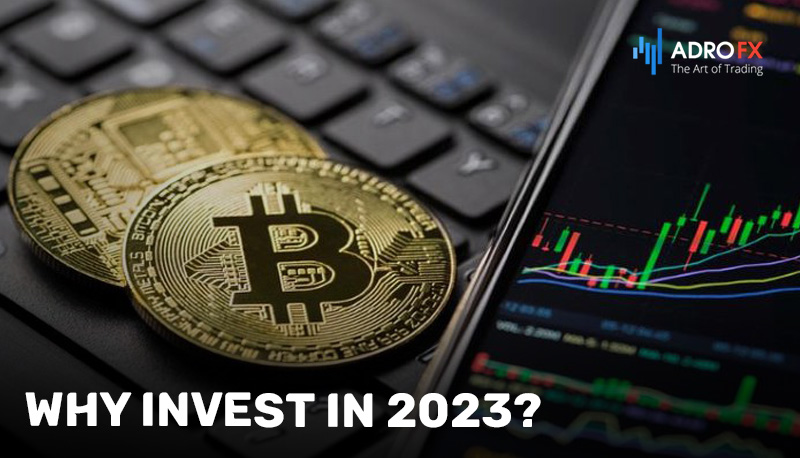
Decentralized cryptocurrency is best for investors who like innovative, high-risk assets. For those who invest not long-term, but engage in, for example, scalping, the risks are much lower, because the ownership of the asset is not long-term - within a single trading session.
A long-term investor should remember that cryptocurrency is not regulated, and there is a certain risk. The most popular crypto is bitcoin. In 2022, bitcoin and altcoins sagged badly. The blockchain industry as a whole was under strain.
Why Invest In 2023?
Since the inflation rate has soared to record-high levels, and simply keeping cash under a pillow or in a bank is a waste of resources - investing is almost the only way to raise capital. However, this is not the only reason why you should invest. Investing can be a passive income for you. Your funds will work for you. Nowadays, passive income is very important.
For example, you need to generate in a few months a down payment to buy an apartment or pay for your child's annual university tuition. In a situation like this, it's nice to have extra capital, not from your main source of income - your paycheck.
ETFs
An ETF is an exchange-traded fund (a pool of securities). It is an instrument that allows you to invest in multiple assets at the same time. While many ETFs aim to track broad market indexes, more niche funds offer investors access to individual market segments. The value of ETFs rises if the underlying assets appreciate. Cash flows, such as interest or dividends, can be automatically reinvested in the fund. One of the biggest advantages of ETFs is that they trade like stocks.
The advantage of ETFs is diversification. But it's important to note that just because an ETF contains more than one underlying position doesn't mean the fund isn't susceptible to volatility. The potential for large swings will depend predominantly on the size of the fund. An ETF tracking a broad market index like the S&P 500 is likely to be less volatile than an ETF tracking a specific industry or sector, such as an ETF focused on oil companies.
Commodity Assets
Commodity prices often follow inflation, making them attractive to investors looking to diversify their investment portfolios. Historically, commodities have produced results that have often diverged from stock market outcomes. Commodities can offer good opportunities from time to time. The rise in energy prices in 2021-2022 showed the impact of the imbalance between supply and demand. Many commodities were in short supply because of the difficult geopolitics. This was a period when investing in commodity assets could bring a good level of return, and this period could probably stretch into 2023 as well.
Commodities can be an excellent hedge against inflation, as commodity prices often rise in price following inflation and can provide solid protection against the impact of rising prices.
Final Thoughts
We urge investors to be patient and cautious. Uncertainty around the economy and markets remains high, and investors should be cautious with high-risk assets. Be open to rebalancing portfolios should inflation normalize and interest rate movements create favorable opportunities.
